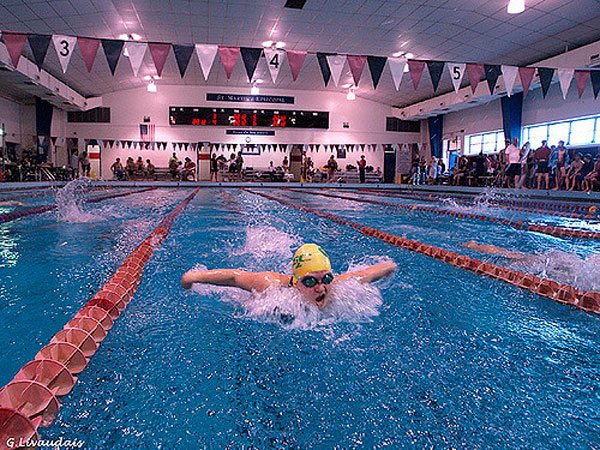
February 24, 2018; Orange County Register and the New York Times
As parents and communities search for solutions to keep their children safe, another youth sports sex abuse scandal, one that has apparently has lingered long under the surface, has broken through at USA Swimming. And, like the one at USA Gymnastics, it looks to be a big one.
In a detailed and lengthy article, the Orange County Register in California alleges that leadership in the national association were aware of sexually predatory coaches but did nothing to stop them or influence the culture of the organization. The last few days have seen the resignations of two key executives, including one whose job was specifically to protect athletes from abuse, who are accused of ignoring ongoing abuse within the organization. These resignations, based on the research by the Orange County Register, could be the tip of the iceberg.
The article speaks volumes about a sordid history of an organization that chose to ignore a real problem in the hopes that the “love” of a sport and winning events and medals would overshadow the illegal sexual exploitation of vulnerable young people and their trusting parents and families. The Board of USA Swimming was aware of this. The Executive leadership knew. They chose to do little or nothing over many years. Here’s some of what the article reveals:
- USA Swimming board members and coaches acknowledged they were aware of statutory rape cases that occurred during US national team trips to major international competitions.
- USA Swimming since at least 2010 has kept a list of more than 30 coaches and officials “flagged” by USA Swimming officials after being arrested or accused by law enforcement of sex crimes including rape and child pornography, but not disciplined by USA Swimming. Some coaches and officials on the “flagged” list have not been banned even after they have been convicted of felonies. Of the 32 people on the “flagged list” in 2010, only six have been subsequently banned by USA Swimming. The “flagged list” is not available to the public. Even when USA Swimming has banned coaches and officials for life for sexual misconduct it can be years before their names are listed on the permanently banned list on USA Swimming’s website.
- Local swim clubs that are members of USA Swimming are insured by US Sports Insurance Company Inc., a company with $31.3 million in assets originally based in Barbados created and solely owned by USA Swimming and governed by former and current USA Swimming officials. While USSIC provides USA Swimming $2-million worth of liability insurance for sexual abuse civil cases, until recently the company provided local clubs only $100,000 worth of coverage for similar cases. This policy of reducing the financial exposure of USSIC at the local level was a factor in generating millions of dollars in “safety rebates” from USSIC back to USA Swimming. In some years the governing body has received back as much as $750,000 in “safety rebates.”
- USA Swimming has also paid $77,627 to lobbying firms to lobby against legislation in California that would have made it easier for sexual abuse victims to sue their abusers and the organizations they worked for or represented in civil cases.
What this says about a board, its leadership, and priorities is worth some careful thought. USA Swimming left its swimmers vulnerable by not banning those accused of sexual misconduct from working within the sport. While they kept a “flagged list” of coaches accused of sexual abuse of underage swimmers, it seems to be not much more than a list.
Sign up for our free newsletters
Subscribe to NPQ's newsletters to have our top stories delivered directly to your inbox.
By signing up, you agree to our privacy policy and terms of use, and to receive messages from NPQ and our partners.
USA Swimming officials said they have not pursued some of the cases on the flagged list because victims have not come forward or have been reluctant to cooperate with USA Swimming. A limited review of the Safe Sport program by the Gundersen National Child Protection Training Center and commissioned by USA Swimming found that the governing body maintains “a number of ‘non-compliant victim’ files in which a survivor has given a clear statement of abuse but is unwilling or unable to testify.”
“These dynamics may result in an offending coach having ongoing access to children,” the USA Swimming commissioned review concluded.
The issue at hand, as with the US Gymnastics Association and other organizations in which parents and communities place their trust, is whether such organizations will prioritize the safety and well-being of their children as they build their athletic skills or is it all about winning and building a dynasty? According to the research of the Orange County Register, the board of USA Swimming knew that coaches were abusing underage swimmers for many years and took little, if any, action. Who then, is complicit?
As parents and others call for the resignations of everyone involved, the nonprofit community needs to look inward as well. How do we ensure our organizational priorities are aligned with the values we say we uphold? What will we sacrifice to ensure the safety of others? Does service on a board mean if there is one bad apple, we may all be spoiled? Who do we hold accountable? This exposé has raised some uncomfortable questions, and the waves are being felt.—Carole Levine













